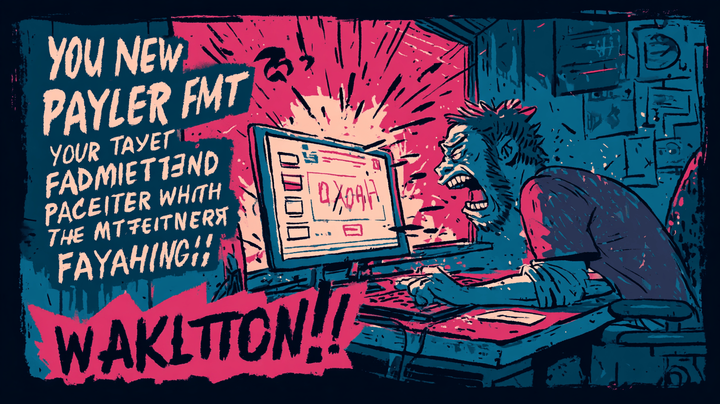Why partnerships are dangerous for your business

Growing a business is an exciting adventure. You learn something new every day. There is a lot of room for experimentation, and nothing is more rewarding than trying a new strategy, or launching a new product, and seeing how it positively impacts sales or makes your customers a lot happier.
However, that means you also do a lot of mistakes along the way. In this article, I want to discuss one of them: partnerships. Unless you are very careful, partnerships are dangerous for your business and can jeopardize your corporate image or your customer base. Let me explain why.
Why partnerships?
My goal when I started Companio was helping entrepreneurs reach the same level of freedom I was enjoying with my own company in Estonia. Allowing them to run an online borderless business that sets them free. Free to travel, to become digital nomads, to avoid red tape, or to escape unfair tax systems (like mine back in Spain).
It honestly brings me joy when one of my customers describe how their company in Estonia helped them reach that dream.
That was the motivation for considering partnerships. I knew we could not solve all the problems of our customers, namely:
- Some of them struggled to open a bank account. This was especially true for crypto companies, as traditional banks, and even most modern fintech solutions won’t serve them. But many “standard” companies faced the same issue.
- Innovative crypto startups also found difficulties to get the right licenses, even under the crypto-friendly Estonian legislation.
- Most aspiring digital nomads were worried about health insurance and getting real medical attention while traveling without a home country. Some of them were just starting their journeys and had lots of doubts about that.
For some of these problems, we tried partnerships. We talked with banking solutions such as Holvi (back when they accepted e-Resident businesses) and Transferwise. However, these companies were only interested in affiliation programs.
More than affiliation…
Earning an affiliate commission if a customer signed up for their services thanks to us was not our goal at all. They did not understand that we just wanted them to offer faster or more smooth onboarding and verification processes for our customers. Without expecting anything in return (except happy customers).
Claiming that our intentions were altruistic would be completely dishonest, though. We knew that by offering a comprehensive solution to our customers, we would position ourselves above our competition, especially if we could recommend a fast and easy solution that removed all the other pain points related to the company management (banking, licensing, legal aspects…).
That’s why I decided to explore closer partnerships with banking solutions, legal firms and lawyers, and health insurance providers, among others.
Eventually, we have abandoned all of them. Our experience has been extremely unsatisfactory. For us, and sometimes even for our customers, which is absolutely unacceptable. But here, I want to talk about one specific case.
The #epicfail crypto banking partnership
Opening a bank account is especially hard for crypto companies. There are just a handful of alternatives. Some of them are not practical for remote entrepreneurs, as they involve traveling to a place such as Malta or Hong Kong to open a bank account. Reliable online solutions are difficult to find, and opening the bank account involves a convoluted process and a lot of paperwork that overwhelms most startups and young companies.
I was decided to find a trusted digital banking solution for our crypto customers. So I conducted an investigation that took me almost three months. In the end, I narrowed the alternatives down to three candidates and contacted them. One of them was willing to enter a partnership with us, not just an affiliation. Namely, we wanted a protocol to guarantee a smooth and friction-less bank account opening for our crypto customers.
We designed a strategy describing the terms of the collaboration between our companies. We would take care of asking the customer for all the required data. In the future, we could even automate that process within our company management tool, Companio. They will offer us priority account verification and ask all the required questions to us. As we conduct AML procedures with our customers, there was a lot of information we didn’t need to ask our customers again. Ideally, our clients will have a trusted and easy way of opening a bank account for their crypto company.
It looked like a great idea on paper.

Why partnerships are dangerous for your business
However, it turned out to be not so great in practice. Let me illustrate some common problems and caveats of partnerships with this concrete example.
They hamper your scalability
Most companies don’t have the right technological tools required to automate the collaboration between partners. For a banking solution, it will be a way of opening the bank account from our dashboard. For a health insurance company, it will be a way of subscribing or canceling your subscription directly online.
At least at the beginning of the partnership, you will need to do a lot of things manually. That means a lot of work, and assigning someone from your team to do those tasks.
I have learned the hard way that everything that adds a manual procedure to your team’s workflow must be eliminated. Not only it adds a failure point, but it also hampers your scalability.
In our case, I had to assign the Chief of Customer Support to take care of this collaboration. That meant distracting her from important duties. Duties such as controlling customers during the onboarding process, making sure everything was running smoothly with our current customers, and keeping an eye on defaulting customers.
They make you lose your focus
Taking care of these partnerships not only took a lot of time from us. It also made us lose focus on other important markets and customers. Markets that were more profitable, required a lot less attention from us, and could have allowed us to grow faster.
In our case, the bank account was not enough. With the new legislative changes for companies with crypto licenses, a whole new array of requisites were introduced.
These requisites are indeed something positive. They help ensure that the Estonian business ecosystem remains a safe and reputable place. But they are very difficult to comply with. We spent precious time figuring out how we could build a perfect solution for our customers.
The obvious conclusion was that there was no way we could help our customers with all these extra requirements. The lesson we learned is: focus on what you can do well and let your customers look for solutions for their other problems.
You have no control over the experience of your customers with your partner
Even though I won’t call myself a stoic, I write a lot about stoicism. One of its principles is letting go of everything you cannot control. Everything that is outside our control can’t be relied upon. It only brings unhappiness.
I should have taken more attention to this principle before deciding to establish partnerships. Opening a crypto bank account is a complex process, subject to many verifications, checks, and AML/KYC procedures.
When we tried to help our first customer to open the bank account for his company, everything went wrong.
First, the customer found a lot of trouble to pay the account opening fee, as it had to be paid in cryptocurrencies. That first experience was far from flawless and took a lot of time.
Then, even if we had carefully established the documentation needed, we were asked for some documents we were not expecting. We had to ask the customer for these documents, and some of them required some work and bothering the customer.
Finally, in order to verify the bank account, the customer was asked for some additional requirements. These included signing up for a client screening service (for AML verification), or modifying their website to indicate that the company had agreed to expand in Europe.
None of these requirements were specially costly or difficult to achieve, but added an extra layer of frustration to the overall experience, regardless of our guidance to comply with them.
Their mistakes become your mistakes
Those requirements also introduced delays in the process. Eventually, opening the account took the customer longer than they expected. He felt frustrated and decided to abandon the process. We obviously warned him not to do that, as we were just a few steps away from having the account ready, and we knew the bank could decide not to refund the opening fee if the customer canceled the agreement.
Unfortunately, they ignored our advice. We then offered the customer other banking options we knew. We tried our best to help.
Sometime later, the customer contacted us demanding us to refund them the money they had invested in the account opening process.
We kindly explained that, first of all, we were not the bank, so they need to ask them for a refund, and second of all, that he was the one who canceled the process. The bank had no obligation of refunding the opening fee.
Still, we tried to mediate in their favor. We talked to the bank and tried to convince them to refund the money to the company. However, in the eyes of the customer, we were the bank, and we owed them money. Absurd as it may sound.
That took us by surprise, and it was an extremely awkward situation. Not only we felt sorry for him, but he blamed us for his experience with the bank. Instead of a happy customer, we had now earned an enemy.
In Spain we have a saying: “No good deed goes without punishment”. It wasn’t as painfully clear to me as in this situation.

You can’t solve everything
Ultimately, we lost a customer. It does not mean all partnerships will end up like that, but our experiences with all of them have been disappointing for one reason or the other. Our conclusion was: you can’t solve everything.
And that’s ok. When I was a small kid, I had this “abandoned kittens” crisis. I saw several abandoned kitties on the street and asked my mother if we could take them home. My mother kindly explained to me that there were many cats on the street, and as noble as my intentions were, I could not save them all.
Cruel as that sounded in my child’s ears, that was one of the most important lessons I learned from my mother. You can’t solve everything. And the same is true for your customers.
… If you insist…
So my recommendation will be to stay well away from partnerships. However, if you decide to go for a partnership agreement, these are some tips to help you avoid the same mistakes I made.
First and foremost, think twice before entering a partnership agreement. Consider the pros and especially cons. If you are offering a quality service to your customers, it does not matter if you can’t cover all of their needs. It is better to do just one thing amazingly well than introducing the customer to a not-so-perfect experience involving different partners.
Also, conduct due diligence of your partners. Learn about their onboarding process, how they work. Ask them to offer proof of the quality of their services, and then the name of at least two happy customers that will happily endorse their services.
Finally, before announcing the partnership, do an initial test with a well-informed client. If the goal of the partnership is solving a pain point for one of your customers, you know at least one candidate that may be interested. Tell them you are considering a partnership with this new provider, and explain how they may benefit from their services.
Be super straightforward and let them know you still don’t know how good the process is going to be, but would like them to give you feedback about it. Ask them to do their own research before chiming in, and make sure they understand you and your partner are two completely different companies.
Let your partner know that this is a test client and that your partnership depends on their feedback. That will ensure they at least try their best to keep this customer happy. Then, ask them for their feedback, especially about the negative aspects.
Conclusion
Partnerships are dangerous for your business. My personal experience with them has been a terrible nightmare. It’s been awkward for us, and we even lost one of our customers when he had a less than ideal experience with one of our partners.
Still, if you are considering a partnership, I offered some tips to help you ensure a quality experience for your customers and a comfortable collaboration process with your partner. Still, those tips will not guarantee the success of the partnership, and you must be super careful with the first customers while both parties get used to working together.
How was your experience with partnerships? Did it bring something positive to your business, or it was a waste of time or even a harmful decision for your brand? Let us know in the comments below!




Comments ()